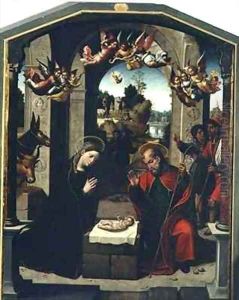Juan Correa Paintings
Juan Correa was a significant Mexican painter of mixed Spanish and African descent, active during the colonial period in Mexico, then known as New Spain. Born in 1646 in Mexico City, Correa's life and career were emblematic of the rich cultural and racial melting pot that characterized the colonial era in the Americas. Despite the racial prejudices of his time, Correa's exceptional talent allowed him to rise to prominence in a period dominated by European artistic influence.
Correa's work is renowned for its religious themes, reflecting the deep Catholic faith that permeated New Spanish society. He was particularly adept at large-scale mural painting and altar pieces, which are characterized by their detailed expression, vibrant colors, and the dynamic portrayal of biblical narratives. His style shows the influence of Baroque art, with its dramatic use of light and shadow and its emotional intensity, yet it also incorporates elements unique to the New World, indicating a fusion of European and indigenous aesthetics.
Over his long career, Juan Correa collaborated with other notable artists of the time and contributed significantly to the decoration of many churches and convents throughout New Spain, including the Mexico City Metropolitan Cathedral and the College of San Ildefonso. His works not only adorned religious buildings but also served as tools for the Catholic Church's evangelization efforts among the indigenous and mestizo populations.
Despite his success, details about Correa's personal life remain scant, and much of what is known comes from archival documents related to his professional commissions. After his death in 1716, Correa's legacy endured, and he is remembered as one of the most important figures in Mexican colonial art. His paintings continue to be studied and admired for their artistic and historical significance, offering insight into the complex cultural dynamics of colonial Mexico and the role of art in societal and religious life.


